Plant Guide:Snake Plant
If you’re looking for an incredibly simple house plant for your home, then it would have to be the magnificent snake plant.
Officially a succulent, the snake plant is a low maintenance house plant, being easy to care for. This plant originates from the dry regions of South Africa and Asia where a good drink is in short supply. For this reason, it has developed the skill of storing water within its leaves. That means they know a thing or two about surviving – perfect if you want to buy a house plant for a friend who’s a little bit forgetful. They’re also proven to be one of the most effective air purifying plants, making them a perfect addition to your home office or living space.
If you’re giving one of these plants as a gift it might interest you to learn that they stand for good luck, purity and positivity. In fact, their spiky leaves are thought to ward off evil spirits and bad luck; a perfect gift if you know someone taking exams, going for a big promotion, or moving into a new home!
Mother-in-Laws Tongue
We don’t want to confuse you, but this plant seems to have earned itself numerous nicknames. The snake plant name comes from the fact that its leaves look almost snake-like (think of Medusa and you’ll see the resemblance), but another name you might hear for this plant is Mother-in-Laws tongue. This again references the leaves that resemble the sharp tongue and honest nature of a Mother-in-Law. We say this is a little bit harsh, so perhaps only gift a snake plant to your mother-in-law if she has a good sense of humour!
Finally, snake plants are also called Sansevieria Trifasciata, which is their scientific name. However a few years ago, after some clever DNA testing, someone realised they had got it wrong and these plants were in fact closely linked to the Dracaena family. As a result, it had a name change and Sansevieria no longer exists (although most people still use this one!).
Types of Snake Plant
If you’re looking for a snake plant, there are plenty of choices. Most of them you can recognise by their distinctive leaves.
For something that makes a dramatic statement, you might want to go for the most popular of all the snake plants, the Laurentii. This plant has fantastic, upright leaves with dark green horizontal strips and yellow-tinged edges.
A slightly more simplistic look would be the Moonshine which has wide pale green leaves and dramatic dark green edging. If you need something that isn’t quite so statuesque, go for the popular Bird’s Nest Snake Plant which only gets to about 25cm tall. As it grows, the leaves form an elegant rosette shape that clumps together to resemble a bird’s nest.
If you’re looking for something with a dramatic nature why not go for the Black Coral which has dark green leaves (as you’d expect they almost look black) with lighter, wavy bands. You could also look at the Cylindrica which has tubular leaves that creates an almost contemporary look.
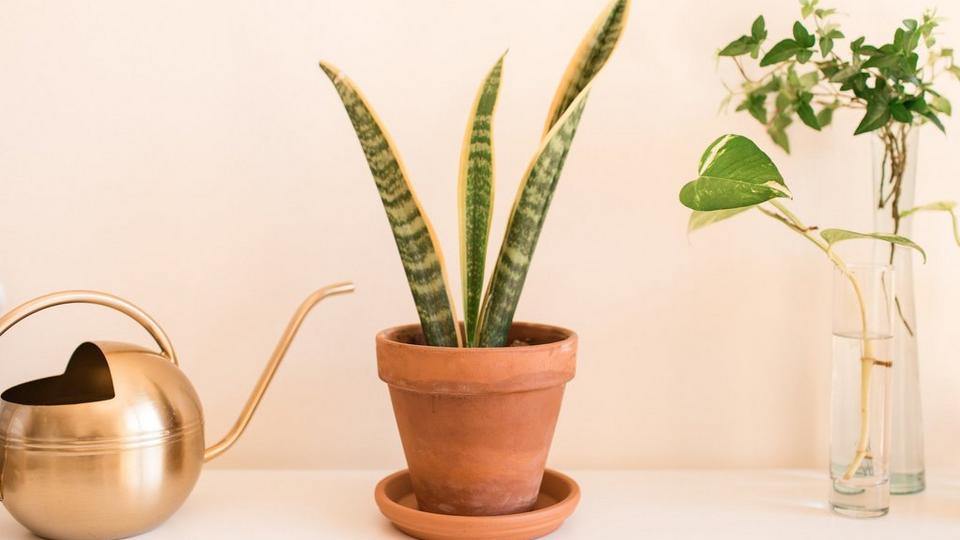
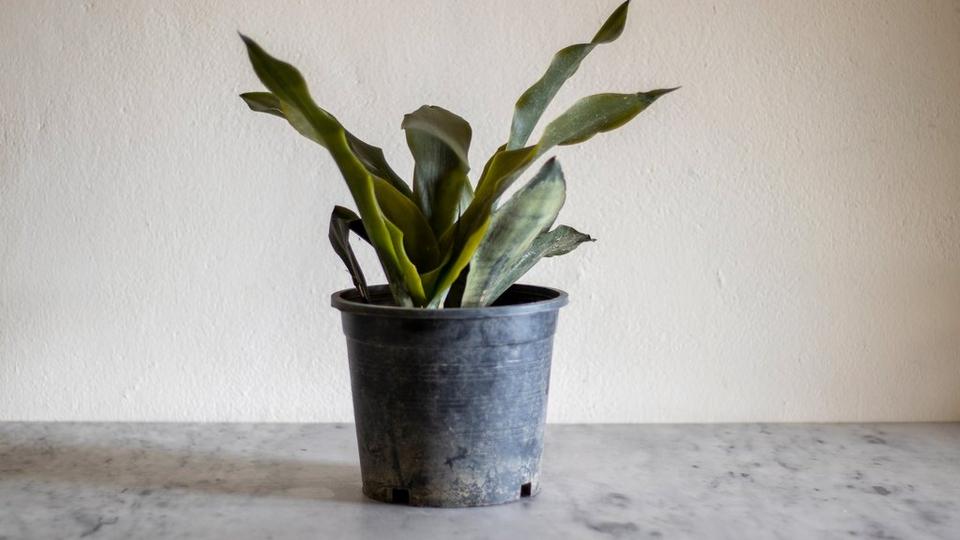
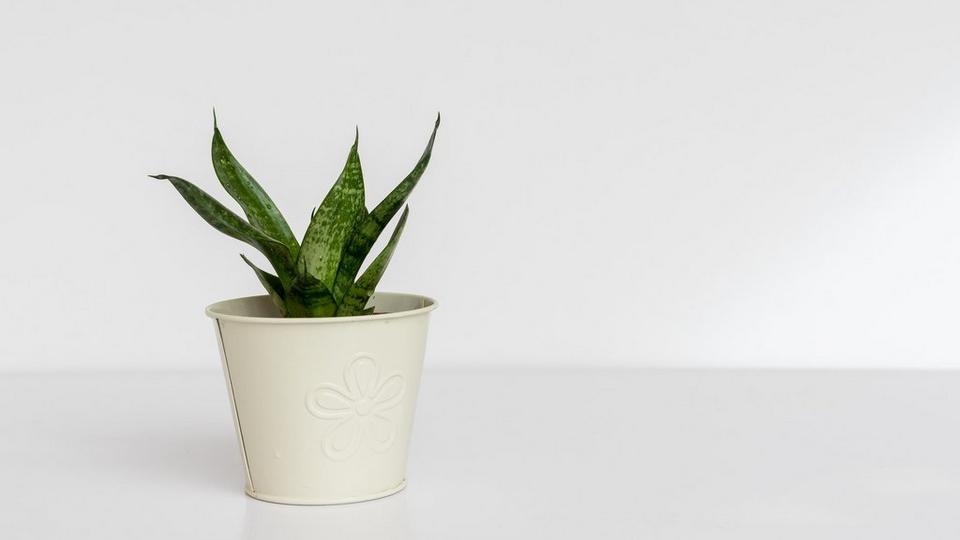
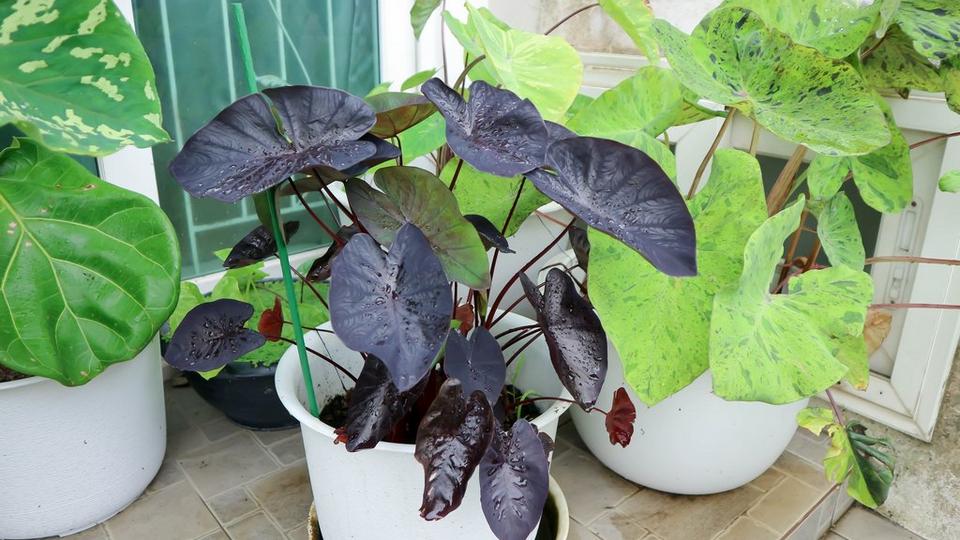
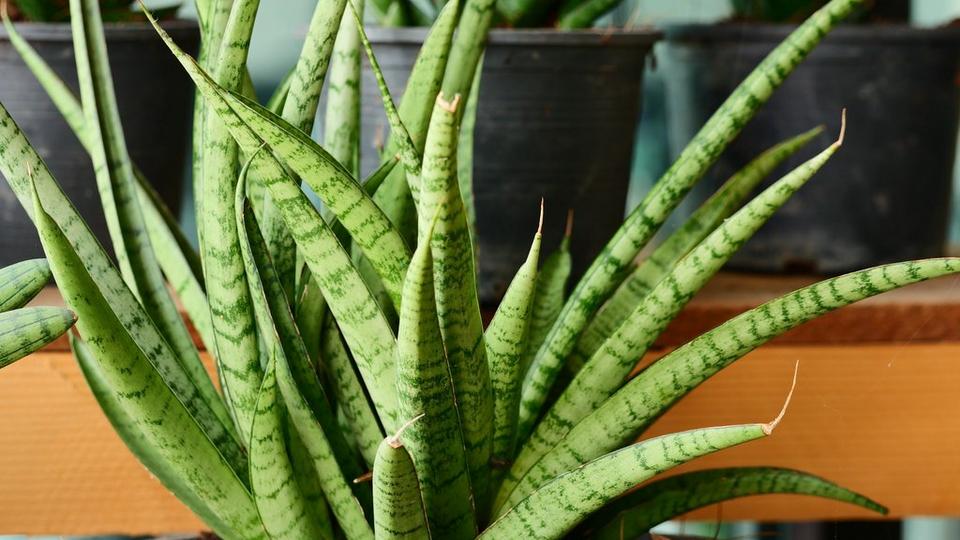
Snake Plant Benefits
One of the great things about this plant is that it’s good for you. House plants go above and beyond by absorbing the carbon dioxide we breathe out and then producing oxygen. This improved air quality provides us with multiple benefits including enhanced concentration, productivity and helping us to breathe easier.
When it comes to improving air quality, snake plants are among the best. A study by NASA showed that if you were locked in a sealed room, you could place six of these plants with you and they would produce enough oxygen for you to survive. Pretty impressive!
Taking it another step further, the snake plant is one of only a few house plants that keeps producing oxygen throughout the night (most of them release carbon dioxide during this time). Keep one of these plants by your bed and it’s going to help you to sleep a whole lot better!
Added to that, snake plants are good at cleaning everything up for us; an important fact when you consider that nearly half of UK homes have high indoor air pollution. Studies have shown that their leaves can filter out common household toxins, such as benzene (found in items such as paint, polish and adhesives) and formaldehyde (found in clothing, carpets, furniture and cleaning agents). They can also clean up trichloroethylene, xylene and toluene, although these are not found in such high quantities in houses.
Need we say more about why you should add a snake plant to your home?
Snake Plant Care
As we mentioned earlier this house plant is the perfect choice if you tend to be a little bit forgetful.
A bit like cacti and other succulents, the snake plant won’t need much to drink. During the summer months, you can get away with watering once every two weeks. In the winter months, when there is less sunshine, you’ll need to reduce this down to every four weeks.
If you’ve got a dark spot in your home where most plants seem to struggle, then you’re in luck, the snake plant can live almost anywhere. From a shady corner that’s a bit cool (but avoid any draughty areas) all the way through to a hot spot with lots of daylight - just make sure it doesn’t sit in direct sunlight as it will burn the leaves.
If your snake plant does look a bit poorly then it’s probably down to overwatering. You can tell because the leaves will look soft or mushy, start to fall over or develop brown spots. Stop giving it a drink and let the soil dry out completely and it should revive itself.
When the leaves turn yellow it means the root has started to rot and it’s time for a change. Remove all the wet soil from around the roots and cut off the rotting leaves. Then lay the plant out to let the roots dry before popping it into a pot with new soil.
How To Propagate Snake Plants
If your snake plant starts getting too big, these plants are incredibly easy to make into new plants (known as propagation). This makes them perfect for sharing the offspring with your friends.
You can do this by cutting off a section of the leaf. Snip a V shape into the bottom of the leaf and leave to dry for a few days. Then place it in a jar of water (make sure it covers the V). After a couple of months, when you see new roots, pop it into a pot filled with compost. Alternatively, take a cutting from the base of the plant and let it dry for a few days. Then place it into a pot with compost, water and leave in a bright spot. Eventually, they will start to form new growth although it will take longer than in water.
Be aware that creating new snake plants through cuttings usually means you’ll lose the mottled pattern on the parent – the leaf will be solid green. To keep the colouring, you need to create a division (you can only do this on big plants). Remove the plant from its pot and cut the root ball (it looks like a tangled knot). You want to split the plant so there are roots and some leaves attached. Now repot each section into a new pot and fill with compost. Water well and leave in a bright spot!
Ready to add some plant power to your home?
